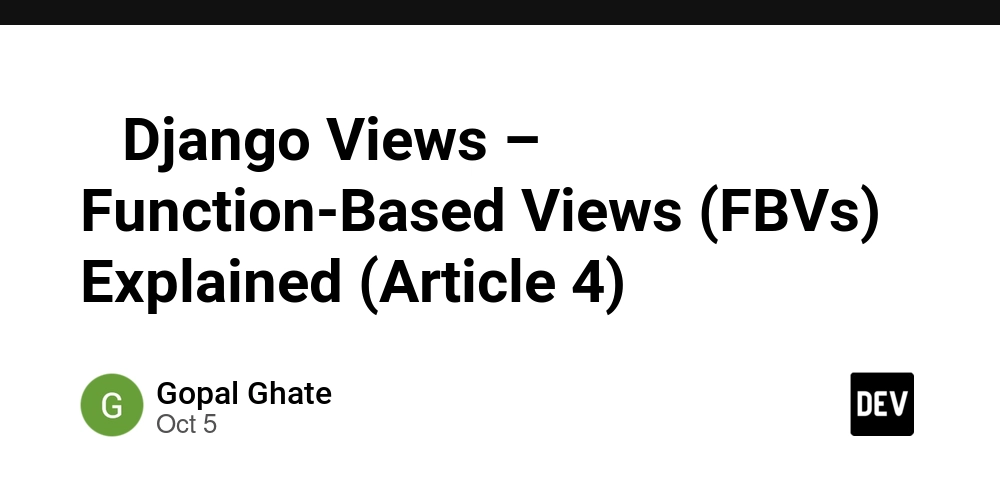In Django, views are the heart of your application. They control what data is shown and how it’s displayed. A view takes a request from the user and returns a response. In this article, we’ll explore Function-Based Views (FBVs), how they work, and how to handle different request methods (GET, POST).
🏗 What is a View?
A view is a Python function (or class) that receives a web request and returns a web response.
Simplest view (blog/views.py):
from django.http import HttpResponse
def home(request):
return HttpResponse("Hello, Django Views!")
Then connect it in blog/urls.py:
from django.urls import path
from . import views
urlpatterns = [
path('', views.home, name="home"),
]
Visiting http://127.0.0.1:8000/ will now show: Hello, Django Views!
📦 Rendering Templates in Views
Instead of plain text, we usually render HTML templates
def home(request):
return render(request, 'blog/home.html', {"message": "Welcome to the Blog"})
Now in blog/templates/blog/home.html
This will display: Welcome to the Blog
🔄 Handling GET and POST Requests
Views can handle multiple request methods:
def contact(request):
if request.method == "POST":
name = request.POST.get("name")
return HttpResponse(f"Thanks for contacting us, {name}!")
return HttpResponse("Contact Form Page")
-
If it’s a GET request, it shows the form page.
-
If it’s a POST request, it processes submitted data.
🛠 Returning Different Response Types
from django.http import JsonResponse
def api_data(request):
return JsonResponse({"status": "success", "data": [1, 2, 3]})
from django.shortcuts import redirect
def redirect_home(request):
return redirect('home')
⚡ Advantages of FBVs
-
Easy to understand and quick to write.
-
Perfect for simple views like forms, API endpoints, or basic pages.
-
Direct control over request/response handling.
⚠️ When FBVs Become Complex
As logic grows, FBVs can become messy with many if/else conditions. Example:
def post_handler(request):
if request.method == "GET":
return HttpResponse("Show posts")
elif request.method == "POST":
return HttpResponse("Create post")
elif request.method == "PUT":
return HttpResponse("Update post")
else:
return HttpResponse("Unsupported method")
This works or we can create a separate functions and urls, but it gets harder to maintain. That’s why Django also provides Class-Based Views (CBVs) (coming in a later article).
🏆 Summary
-
Views take a request and return a response.
-
FBVs are functions that handle logic directly.
-
You can return HTML, JSON, or redirects.
-
FBVs are great for simple use cases, but can get messy for complex ones.



